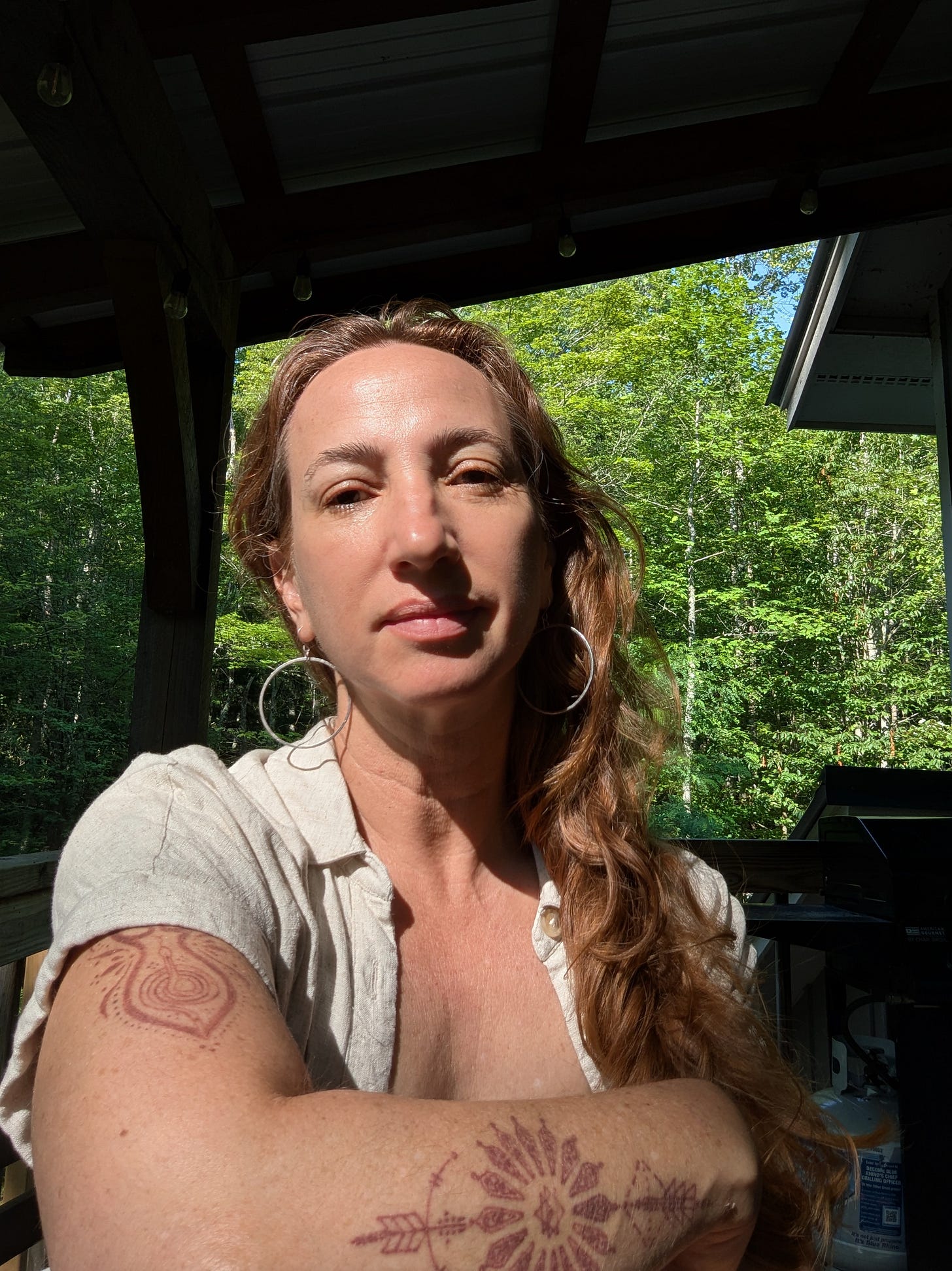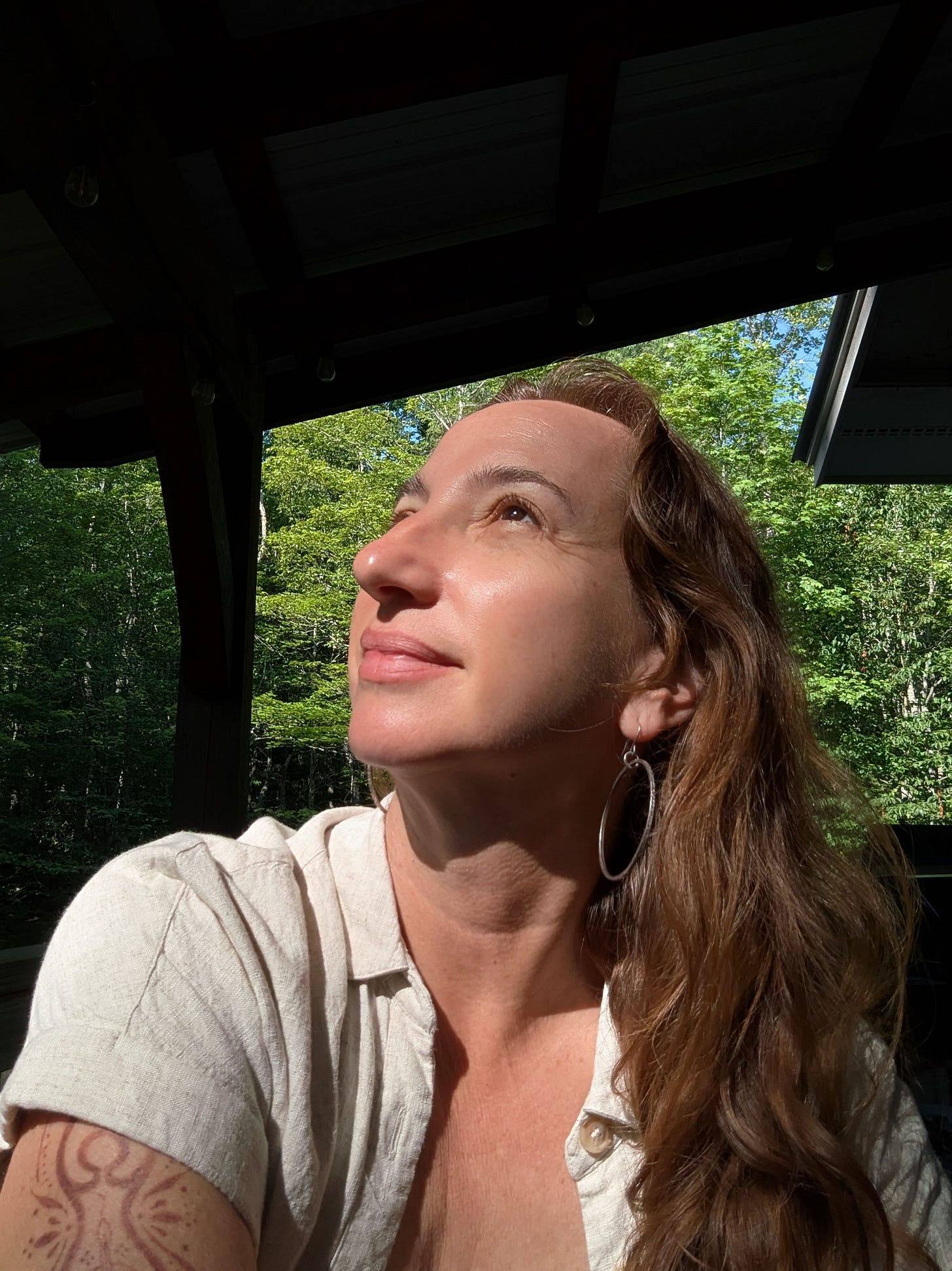9 Easy, Inexpensive and Essential DIY Beauty Products
The secret to eco-friendly, healthy beauty
If you like to eat organic homegrown food from the co-op or farmer’s market but you’re still putting moisturizer all over your skin with ingredients like diazolidinyl urea , diethylhexyl phthalates, mineral oil or synthetic fragrances, or if you don’t know what’s in your beauty products then read on.
At some point in my teen years, it occurred to me that the most beautiful beauty was natural beauty. Hey, some people prefer silicone breasts, fake tans, and heavy make-up, but that wasn’t what interested me. I looked around and saw that people who took care of themselves like drinking a lot of water or wearing sunscreen or getting exercise radiated a certain essence of attractiveness that I supported. There was a glow to them I wanted to emulate.
To this day, I continue to love the natural look. I will always prefer long wild locks, frizzy fros, freckled shoulders, blonde eyelashes, pale pink lips, braless breasts, hairy chests, bearded chins, and crows’ feet around my friends’ wise eyes.
Rethinking Modern Beauty: Less Is More
I understand a major part of our media and society advocate changing the way you look to fit a stereotypical homogenous idea of beauty and it’s a lot of programming to unblock, especially if you live in more superficial environments where looks are connected to self-worth. Lately I’ve been a fan girl for Pamela Anderson who has been brave enough to go without makeup even though she exists in a world that emphasizes extreme amounts of modifications in appearance, including everything from makeup to plastic surgery.
For me, natural beauty also equates to natural products. Less is more being my go-to mantra for what I put on my skin. My dear friend, a healer and herbalist, pointed out to me once that we don’t want to put on our skin what we aren’t willing to put inside our bodies and that really struck me as true. Beauty products should be edible. You might not want to eat them, but you could.
Skin is the biggest organ of the body. Research published in the American Journal of Public Health found that skin absorbed an average of 64% of total chemical contaminant dosage. The face is several times more permeable than other body surfaces, while underarms and genitalia show 100% absorption rates. So, just because you’re not ingesting those carcinogens and petroleum products, doesn’t mean you’re not ingesting them.
Hidden Dangers in Commercial Cosmetics
Side effects of these commonly found toxins include cancer risks, hormone and endocrine disruptions, reproductive and fetal developmental issues, neurological effects, respiratory and skin irritations, lowered immunity, cell damage and much more. These side effects can be even worse in children.
In the United States, cosmetic products and ingredients do not need FDA approval before they go on the market. Cosmetic companies are not required to share their safety data or file their product formulations, and the FDA only acts against unsafe products after they’ve gone to market and are demonstrating harm. By contrast the FDA prohibits only about 10 ingredients in cosmetics for safety reasons while the European Union has banned over 1,500 different cosmetic ingredients due to potential health risks, including ones we use here such as formaldehyde and formaldehyde-releasing preservatives, hydroquinone, triclosan, lead compounds, certain types of parabens, petroleum distillates, phthalates, selenium sulfide, quaternium-15 and many others that are difficult to spell and pronounce.
Are you starting to think maybe you should look more closely at those product labels after all?
How to Choose and Use Truly Natural Products
Over the years my beauty products have changed as new companies come and go. Overall, I have always looked for products with the least amount of ingredients and with zero ingredients that I can’t understand. If the name sounds like a chemical, it probably is. This is not always easy to do and sometimes I am unsuccessful, settling for companies that don’t have perfect ingredients but that I feel good about and don’t test on animals.
Secrets to Natural Beauty Products:
Buy products with fewer ingredients and as many as you can recognize as possible if not all
Locally made products will often meet this standard
Buy in bulk to avoid extra plastic packaging. If that’s not possible, buy products that use recycled or recyclable packaging.
Make your own beauty products
Here are some products that I purchase and love:
Satva Botanicals: Local to New Mexico, Satva Botanicals are completely natural bespoke beauty products made of organic and wildcrafted ingredients. Each item is formulated with intention and love by owner Kristin Moore and are meant to be used with conscious self-care in mind, which you can tell from the names. My favorites are the Restore lip and balm, Nourish facial oil, and Refresh tonic mist.
Uncle Harry’s: Take one look at their ingredient list on any of their products and you will feel good about using Uncle Harry’s. I know what every item is on the list and why it’s in there. Plus, they feel great and work great. My favorites are the Ayurvedic face cream, Jojoba face tonic and seaweed hair gel.
My daily sunscreen from La Puebla Elementals is local and I’ve been using it religiously for years. The ingredients are so pure. I love that it is matte on my skin, perfect for daytime, and it is literally green. It is only 15 SPF so in the summer when the desert sun is brightest, hot tip, I put on a layer of pomegranate seed oil beneath it, which increases the SPF by 8.
Beware of “Natural” Labeling—The Greenwashing Trap
Warning! Be wary of products that tout themselves as having all natural ingredients. Many of these such as Burt’s Bees, Thayer’s or Tom’s of Maine have been bought out by larger corporate monopolies that ruined natural products that used to be genuinely healthy but are now shells of their former selves. Instead, seek out independently owned companies with third-party certifications like MADE SAFE.
If you are in a pinch and only have access to Walgreens, yes, go ahead and get Burt’s Bees. They are still cruelty-free, eco-friendly and budget friendly. It is the lesser evil but, unfortunately, there are currently allegations against them for having undisclosed PFAs in some of their makeup products, so it’s best to avoid those. This goes to show that just because a product says it is “all natural” doesn’t mean you can believe them.
The best option is to make your own products; this way you always know what is inside. Not only that, but it’s also so inexpensive. Beauty products, especially natural ones that are run by smaller businesses, can be pricey. For some things, it’s worth it, but for others you can easily make it yourself and save a lot of moolah.
9 Easy Beauty Products to Make at Home with Minimal Ingredients
And when I say easy, I mean it. Like there’s no cooking involved, you don’t need special equipment. You probably already have these ingredients in your cupboard and can start experimenting right now.
Making your own beauty products is so inexpensive, requires very little packaging and you know everything that you are putting on your body. You can even eat it (though it might not taste good.)
Keep reading with a 7-day free trial
Subscribe to Our Uncertain Future to keep reading this post and get 7 days of free access to the full post archives.



